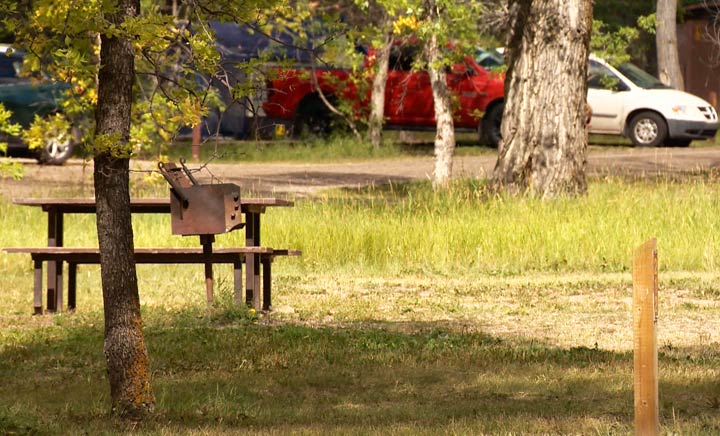Overall occupancy at all Saskatchewan provincial parks for nightly campsites is 63 per cent for the upcoming weekend, according to the Ministry of Parks on Friday.

The 2020 camping season got off to a bumpy start on June 1, with campsites limited to 50-per cent capacity due to COVID-19 restrictions.
Earlier this week, the Saskatchewan government opened up the remaining campsite inventory at provincial parks and saw over 9,800 reservations.
“Occupancy in our border parks is lower due to the discouragement of out-of-province travellers during this time, which is showing up in the overall occupancy number,” read a statement from the ministry.
“These occupancy numbers include our entire camping inventory, so while we might have a lot of occupancy in our non-electric and economy sites, which is making the occupancy number lower, campers might be challenged to find an electric or full-service site during our peak season of July to mid-August.”

The ministry said many central and southern parks are at capacity in July and the first few weeks of August are busy as well.

Get daily National news
“Parks near the urban centres have been extremely busy these past few weekends with camping, day use, water activities, and we expect that trend to continue as Saskatchewan people seem to be staying close to home this summer as a result of COVID-19,” read the statement.
“We are seeing an all-time high in annual vehicle entry permit sales, which demonstrates an increased interest in camping and/or day visits for Saskatchewan people. It is shaping up to be a busy summer.
“Fall is a great time to consider camping with plenty of sites to choose from across the province. Overall occupancy from now until the end of September is currently at 37 per cent.”
In 2019, the ministry said there were an estimated 3,922,527 visitor days to Saskatchewan provincial parks. The highest yearly record was 3,991,637 visitor days in 2016.
Questions about COVID-19? Here are some things you need to know:
Symptoms can include fever, cough and difficulty breathing — very similar to a cold or flu. Some people can develop a more severe illness. People most at risk of this include older adults and people with severe chronic medical conditions like heart, lung or kidney disease. If you develop symptoms, contact public health authorities.
To prevent the virus from spreading, experts recommend frequent handwashing and coughing into your sleeve. They also recommend minimizing contact with others, staying home as much as possible and maintaining a distance of two metres from other people if you go out. In situations where you can’t keep a safe distance from others, public health officials recommend the use of a non-medical face mask or covering to prevent spreading the respiratory droplets that can carry the virus.
For full COVID-19 coverage from Global News, click here.



Comments